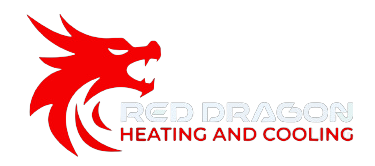How to Choose the Perfect Mini Split System in Johnstown, NY
Published October 23, 2025 | Your guide to selecting the ideal mini split for upstate New York’s four-season climate.
Mini split systems are transforming home comfort across Johnstown and Fulton County, delivering efficient heating and cooling without the bulk of traditional ductwork. Whether you’re renovating a historic Main Street home or adding comfort to a new addition, the right system will save energy, cut utility bills, and keep your family cozy through humid summers and cold Mohawk Valley winters.
Understanding Mini Split Basics
A mini split pairs an outdoor compressor with one or more indoor air handlers, linked by slim refrigerant lines. Because no ducts are required, they’re perfect for older Johnstown houses and new additions alike.
Mini splits double as heat pumps, cooling in summer and extracting outdoor heat in winter—even below 0 °F—making them ideal for our upstate climate.
Learn more about how ductless systems compare with other solutions in our guide to Energy-Efficient Heating Options in Fulton County.
Assessing Your Home’s Needs
Start by mapping which rooms need climate control: bedrooms, sunrooms, basements, or attics. Consider:
-
Insulation (many Johnstown homes have variable wall quality)
-
Sun exposure (south-facing windows along South Comrie Ave heat up fast)
-
Ceiling height & room size
-
Occupancy patterns
If your home lacks ducts, mini splits are the fastest path to comfort without renovation. For existing systems, they supplement hard-to-condition spaces or additions.
Single-Zone vs Multi-Zone
-
Single-Zone: One outdoor ↔ one indoor unit—great for isolated rooms or home offices.
-
Multi-Zone: One outdoor ↔ multiple indoor heads—ideal for multi-story homes or full-house upgrades.
Many Johnstown homeowners choose 2- or 3-zone systems for the best balance between control and efficiency.
Sizing Your Mini Split
Proper sizing ensures comfort and longevity. An HVAC technician should run a Manual J load calculation considering square footage, insulation, and our local heating-degree days (~7,000 per year).
Typical guideline: 20–30 BTU per sq ft.
Example: A 12×12 bedroom with average insulation → 9,000 BTU unit; draftier rooms in 19th-century homes → 12,000 BTU or more.
Energy Efficiency & Rebates
Look for SEER ≥ 16 (cooling) and HSPF ≥ 8.5 (heating).
Inverter-driven compressors automatically modulate power for stable temps and lower bills.
Residents served by National Grid or NYSEG may qualify for NYSERDA energy-efficiency rebates—sometimes saving hundreds on installation.
See our Home Energy Efficiency Calculator to estimate potential annual savings.
Indoor Unit Styles
| Type | Ideal Use | Notes |
|---|---|---|
| Wall-Mounted | Most rooms | Cost-effective, quick install |
| Ceiling Cassette | Large open spaces | 360° airflow; discrete look |
| Floor-Mounted | Low-wall layouts / attics | Great where wall space is limited |
| Concealed Duct | Blended aesthetic | Short ducts hidden in ceiling/wall |
Place indoor units away from direct sunlight or vents to ensure accurate temperature sensing.
Smart Controls & Air Quality
Wi-Fi connectivity lets you adjust temps remotely—ideal if you’re out at the Johnstown Farmers Market or commuting to Albany.
Other useful features:
-
Programmable timers
-
Sleep mode temperature tapering
-
HEPA or ionizing filters
-
Voice control via Alexa/Google Home
Professional Installation
Certified HVAC pros handle:
-
Mounting indoor/outdoor units
-
Running electrical & refrigerant lines
-
Commissioning and leak testing
Outdoor units need firm footing, snow clearance, and airflow space; indoor placement should avoid furniture obstructions.
Maintenance & Longevity
-
Monthly: Clean filters & indoor panels.
-
Annually: Pro inspection—refrigerant, electrical, and coil cleaning.
-
Winter: Keep outdoor units free of snow buildup.
Well-maintained systems often last 15–20 years.
Budget & Value
Installation costs vary by capacity and zone count, but higher-efficiency models lower lifetime operating costs.
Factor in:
-
Up-front system + labor
-
NYSERDA / utility rebates
-
Expected energy savings
Trusted brands with longer warranties provide the best long-term ROI.
Final Takeaway
Choosing a mini split system in Johnstown, NY is about matching your home’s layout and insulation with the right capacity, efficiency, and installer. With today’s inverter technology and local rebate programs, ductless systems deliver year-round comfort, reduced bills, and quieter operation—perfect for upstate living.
✅ Next Step: Request a local consultation for mini split installation in Johnstown NY to get personalized sizing and rebate options from certified HVAC professionals.
